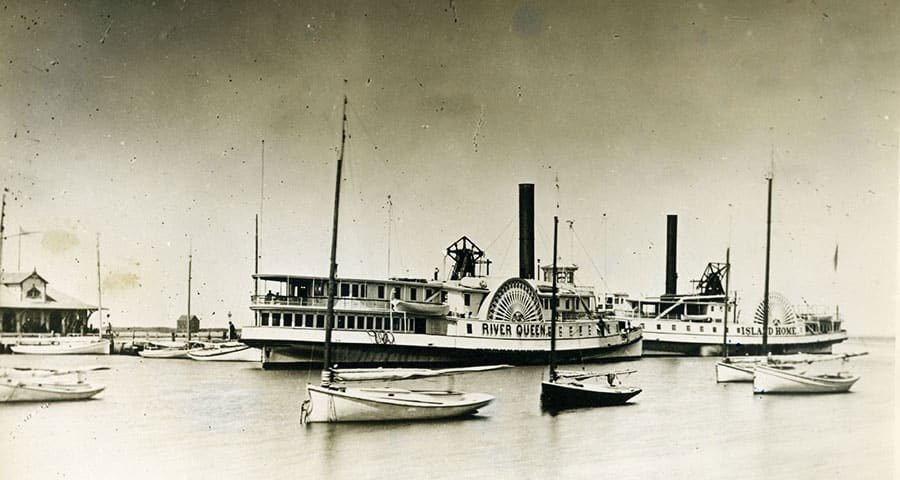• by Amy Jenness, author of On This Day in Nantucket History •

The fastest trip recorded was on July 30 when the Eagle ran between Nantucket and New Bedford in eight hours and seven minutes. The vessel made regular trips to Nantucket for three months, but the venture failed from a lack of passengers and the high cost of operating the ship. The owners sold the Eagle in September 1818 to a company that began ferry service between Boston and Hingham.
When the Eagle venture failed, many concluded commercial steamboat service to Nantucket was not feasible. But Captain R.S. Bunker, a Nantucket native, refused to give up. In May of 1824, Bunker brought the steamboat Connecticut to Nantucket, but did not win over Nantucketers and his venture ended.
In noting the Connecticut’s lack of success, The Inquirer said in 1824, “It is hoped the little specimen of steam navigation lately exhibited to the citizens of this town will remove all doubts, if doubts may still remain, of the utility of a steamboat to ply between Nantucket and the continent.”
Captain Bunker tried again to provide commercial service on the Connecticut in 1828. One day after arriving on the island, the ship started for Falmouth with 300 passengers but went only a short distance and had to return because of rough conditions.
Finally, in 1830, steam-powered vessels on Nantucket finally took hold, and a succession of private passenger vessels served the island into the 20th century, but those ventures were notoriously unreliable.
As island tourism began to grow, train line and boat companies took note. An item in The Inquirer in 1854 reported on a new New Bedford, Martha’s Vineyard, Nantucket Steamship Company that planned to offer service to Nantucket. In addition, two railroad companies were also planning to establish a boat line. “A little opposition in steamboating here would be no disadvantage to our own community,” the editor noted.
The 1870s brought the first regular winter service, as the steamers were now powerful enough to break out of icy harbors. But the boat lines still lost money. Service became more chaotic in the early 1900s, first as rail travel declined and then as the U.S. Navy confiscated steamships to serve in World War I and World War II.
In 1946, the Massachusetts Steamship Company took over the holdings of the defunct Island Line in New Bedford . It established service to Nantucket and immediately raised fares, which outraged island residents. The boat line posted losses for much of its two years, and when it appeared that yet another private steamship line would fail, the government created a committee to investigate ways to ensure dependable boat service to the islands.
Out of that came the New Bedford, Woods Hole, Martha’s Vineyard, and Nantucket Steamship Authority, a state agency charged with providing passenger, car, and freight service to Martha’s Vineyard and Nantucket. In 1948, the SSA purchased the Massachusetts Steamboat Company’s holdings for $1.3 million and began service. In 1960, the authority dropped New Bedford from its route as a cost-cutting measure. Gradually, the Steamship Authority purchased new boats that were diesel-powered and sold its last steamship in 1987.


